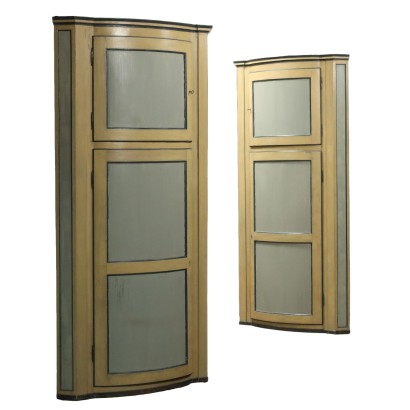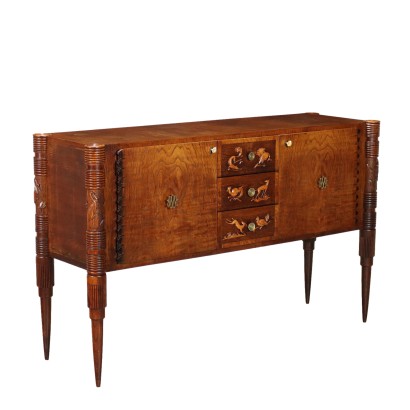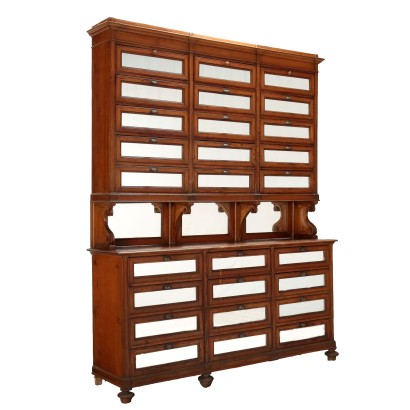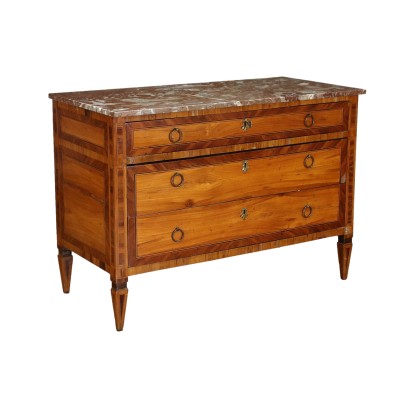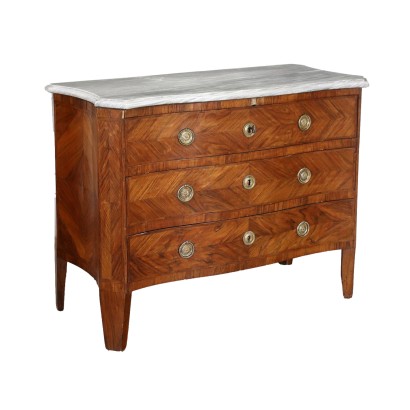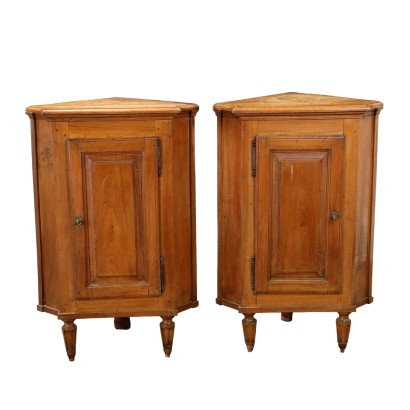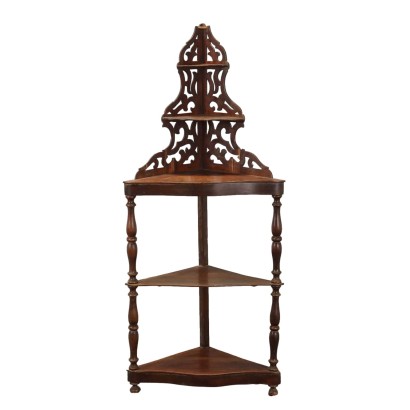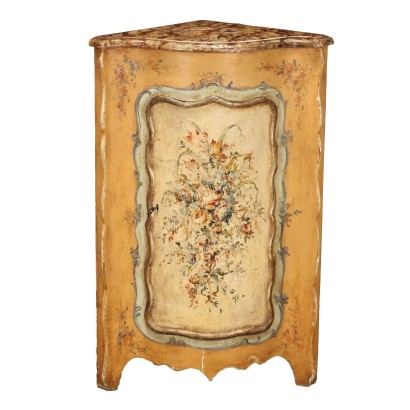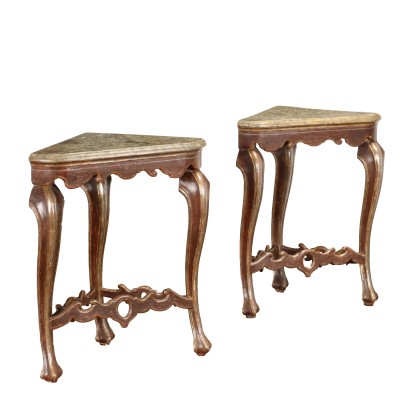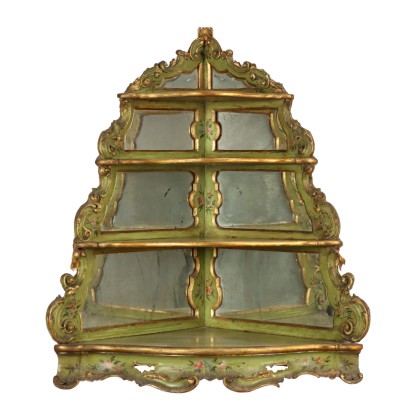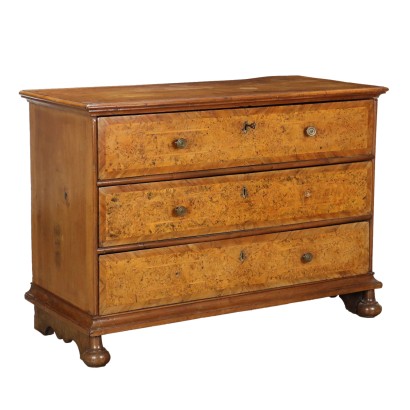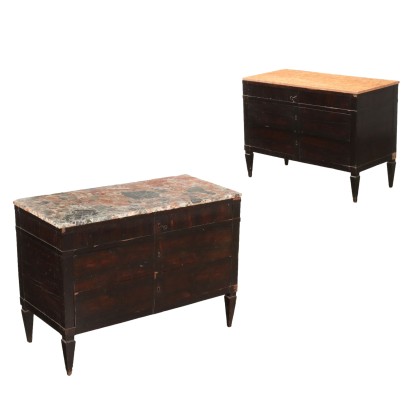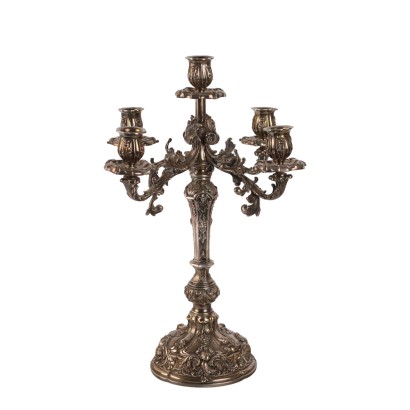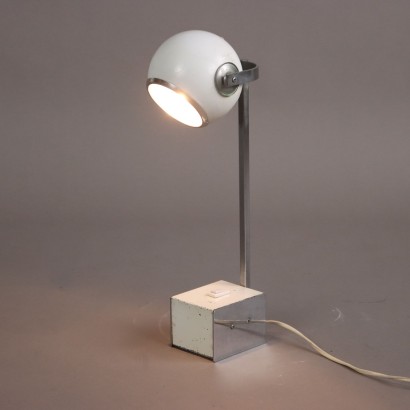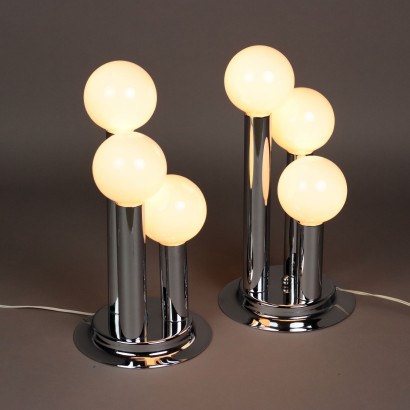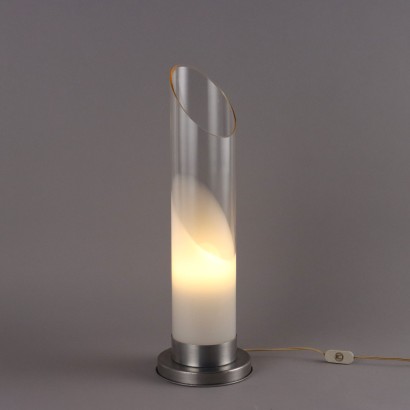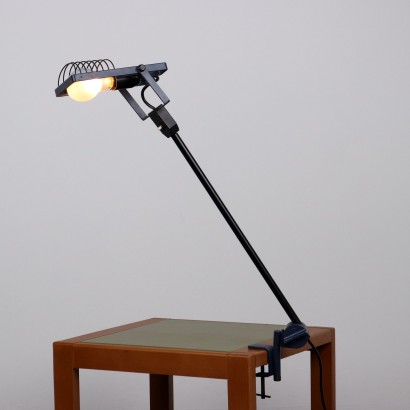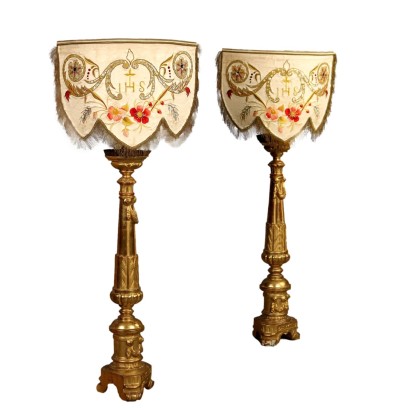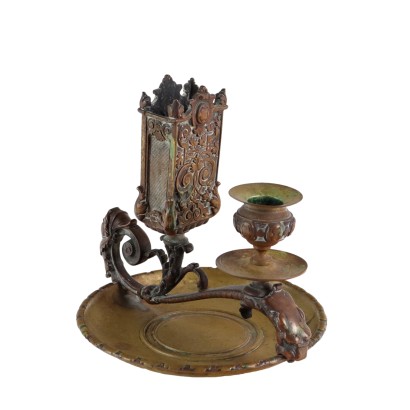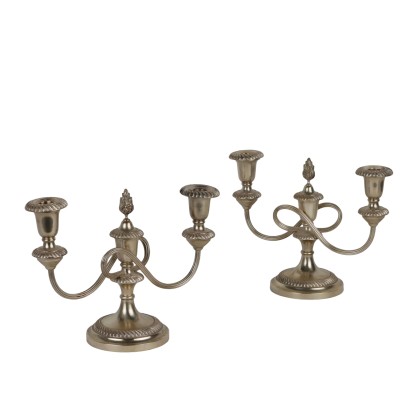Antique Corner Cupboards Directoire Painted Poplar Italy '700-'800 - Antique Painted Corner Cabinets
Features
Antique Painted Corner Cabinets
Style: Directoire (1790-1804)
Origin: Emilia Romagna, Italy
Main essence: Poplar
Description
Pair of painted corner cabinets built with a front containing two doors, one double and surmounted by a smaller one. Painting in ochre and light blue tones, original locks.
Product Condition:
Furniture in very good condition that may show slight traces of wear; may have undergone restoration work carried out by an expert. We try to present the real condition of the furniture as completely as possible with the photos. If some details are not clear from the photos, what is reported in the description is valid.
Dimensions (cm):
Height: 256
Width: 130
Depth: 82
Additional Information
Style: Directoire (1790-1804)
In this short period of time, we see, in the furniture, an accentuation of the archaeological rigor and at the same time an accentuated linear severity is formulated that in fact preludes and anticipates forms and ornamentations that will then be typical of the Empire style.The furniture of the Directoire era abandons the delicate pastel colors that characterize the Louis XVI production in favor of the dark magnificence of mahogany, which in its vast range of essences will be by far the most appreciated wood in this period.
Added to this is a general abandonment of the floral inlay trends in favor of simple fillets in ebony or amaranth-colored wood, the insertion of light linear profiles in brass is very fashionable.
The innovations are grafted onto a trend that normally finds typologies already widespread in the neoclassical era, and in some cases there is no lack of significant innovations: the chairs, often painted in light colors and archaeological motifs, are distinguished by the typical upholstered or openwork backrest that rolls up "en crosse" and in an "S".
The back legs are very fashionable if curved like a sabre and the typology with an enveloping backrest, called gondola, becomes widespread.
For studies and libraries, chair models characterized by a high concave backrest, called "en hémicycle", with a usually solid structure and a seat covered in leather, become widespread.
The use of the secrétaire finds wide diffusion and the typology of the toilette is completely new, now similar to a console on which a tilting mirror rests within hinged plates.
Certainly the most imaginative novelty of this period is the graceful psyche, consisting of a large oval or rectangular mirror, mounted within high wooden supports and generally supported by sabre-shaped legs.
This is the era in which the oval or round dining table became widely used, while the desk continued to maintain the shape of the à bureau plats models already known in the previous era.
In this period there were no particular technical-constructive innovations, the technologies remained those already in use since the beginning of the mid-eighteenth century.
Find out more about the Directory with our insights:
The unknown gaming table
INSERT ADDITIONAL LINKS:
The Austrian taste of Baroque
The furniture of the Kingdom of Naples
The end of the Directory and the beginning of the Empire
The birth of the private library
Main essence: Poplar
Essence considered "poor", it is a white wood, with yellowish or greyish shades, light and tender, which is easily damaged. It is used for rustic furniture or in the construction of furniture. The most valuable use it has had in the history of furniture is in Germany, in the 19th century, for veneers and inlays in the Biedermeier period.Other customers have searched:
Angoliera, mobili dell''800, mobili del '700, mobili del '600, angoliera con alzata, angoliera a doppio corpo, angolare, credenza, mobile da angolo, controangolo, angolo..
Approfondimenti
Per saperne di più:
Una coppia di angoliere piacentine del XVIII in perfetto stile neoclassico
Un arredo completo d'angolo, pezzo unico degli anni '50
Sull'antiquariato in generale dai un'occhiata anche a
Classic Monday: da un pezzo dei nostri magazzini alla storia dell'antiquariato
L'antiquariato dalla A alla Z: il Dizionario dell'Antiquariato
Il dizionario dell'antiquariato - Lastronatura
Il dizionario dell'antiquariato - Mascherone
Il dizionario dell'antiquariato - Natura morta
Il dizionario dell'antiquariato - Opificio
Il dizionario dell'antiquariato - Pastiglia
Il dizionario dell'antiquariato - Savonarola
Il dizionario dell'antiquariato - Rosone
Intaglio barocco con motivo a ricciolo
Approfondimenti
Per saperne di più:Una coppia di angoliere piacentine del XVIII in perfetto stile neoclassico
Un arredo completo d'angolo, pezzo unico degli anni '50
Sull'antiquariato in generale dai un'occhiata anche a
Classic Monday: da un pezzo dei nostri magazzini alla storia dell'antiquariato
L'antiquariato dalla A alla Z: il Dizionario dell'Antiquariato
Il dizionario dell'antiquariato - Lastronatura
Il dizionario dell'antiquariato - Mascherone
Il dizionario dell'antiquariato - Natura morta
Il dizionario dell'antiquariato - Opificio
Il dizionario dell'antiquariato - Pastiglia
Il dizionario dell'antiquariato - Savonarola
Il dizionario dell'antiquariato - Rosone
Intaglio barocco con motivo a ricciolo
Product availability
The product can be seen at Cambiago
Immediate availability
Ready for delivery within 2 working days from ordering the product.



